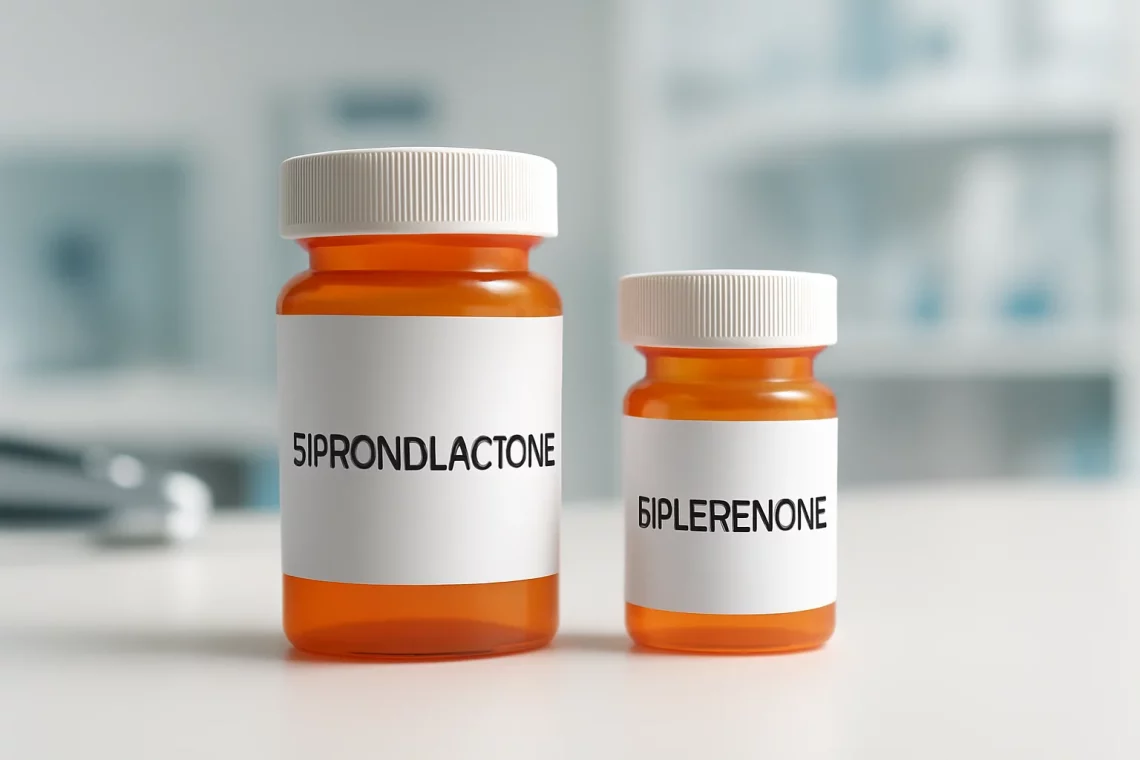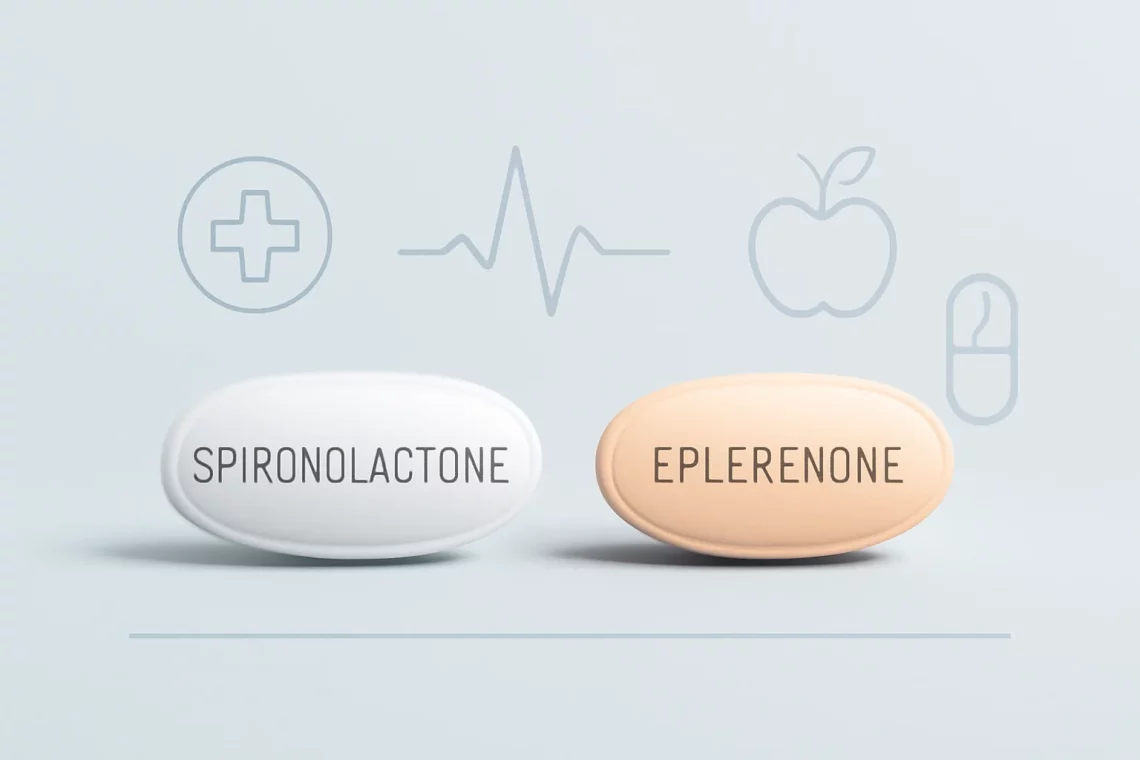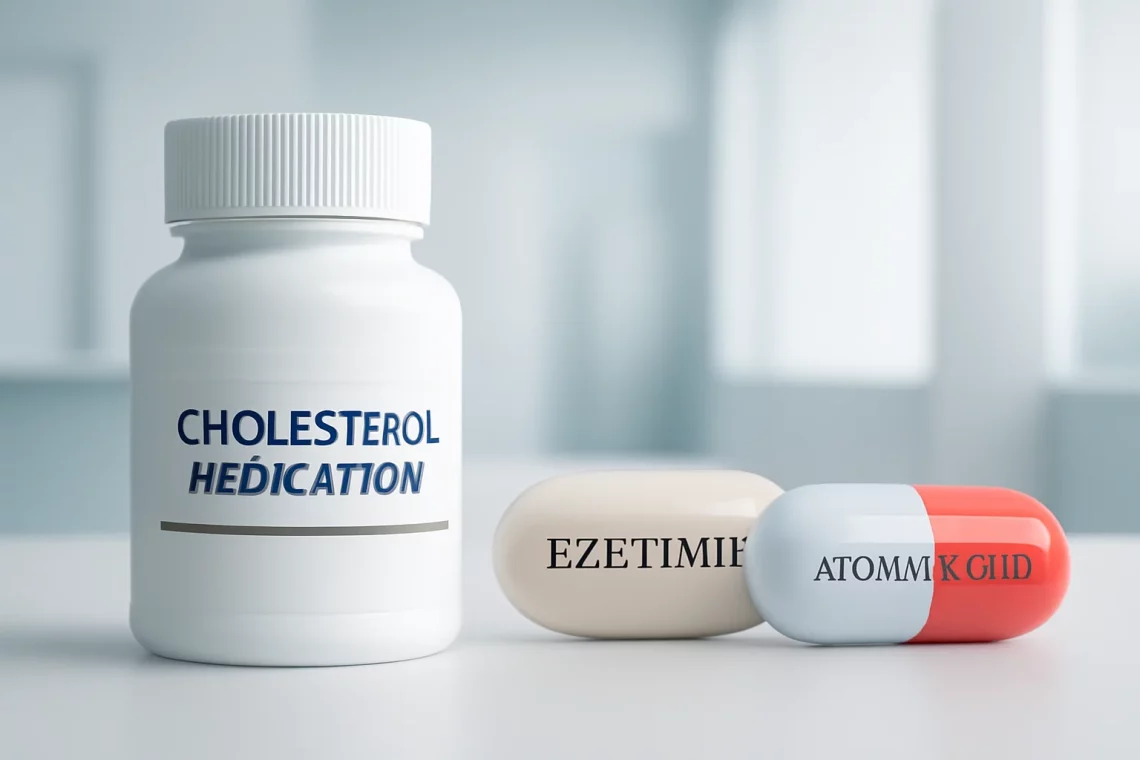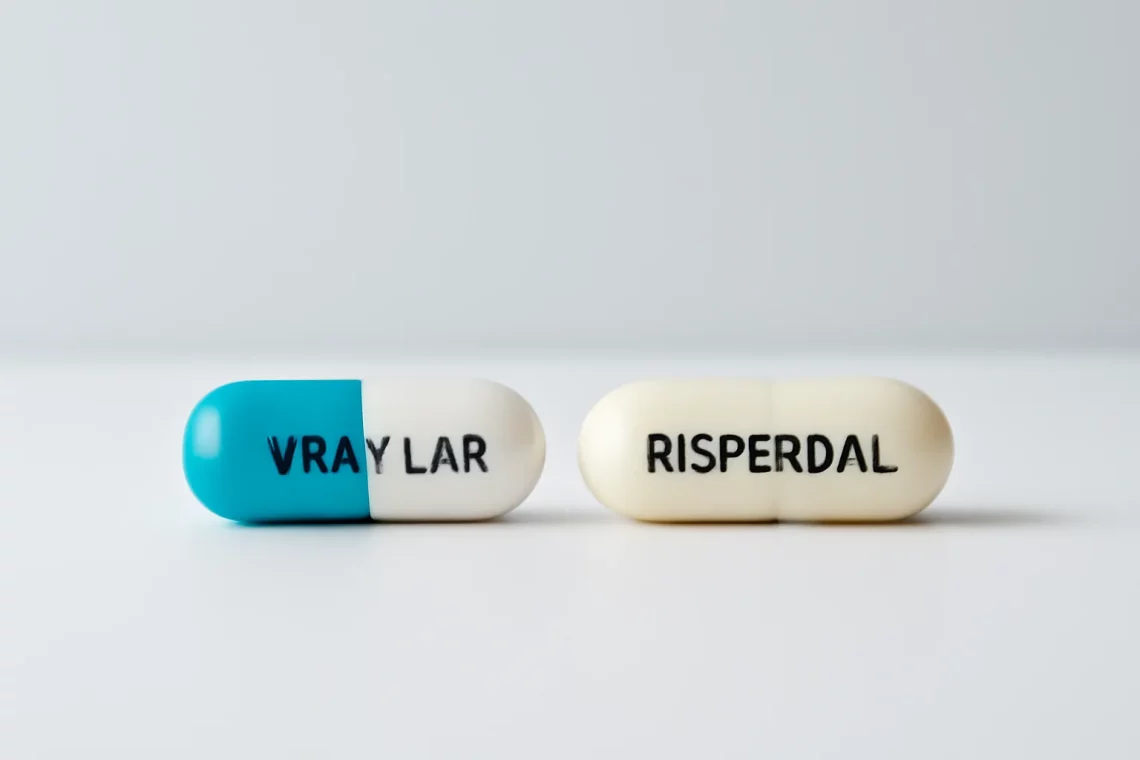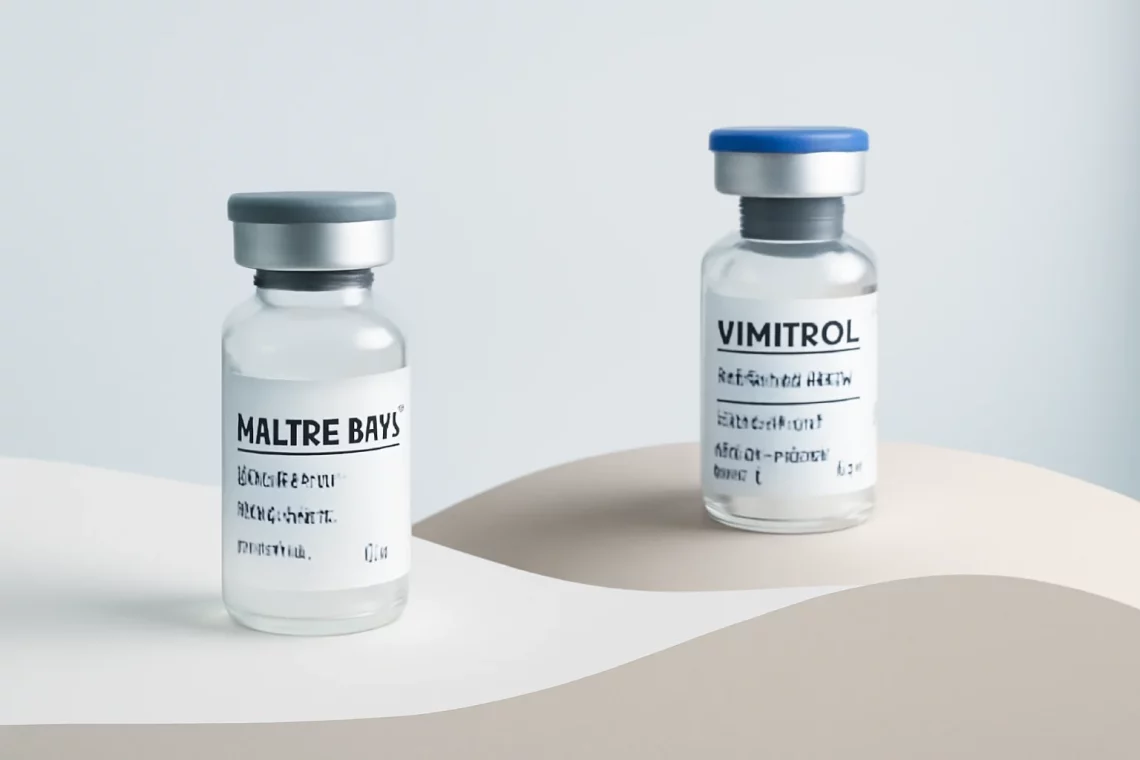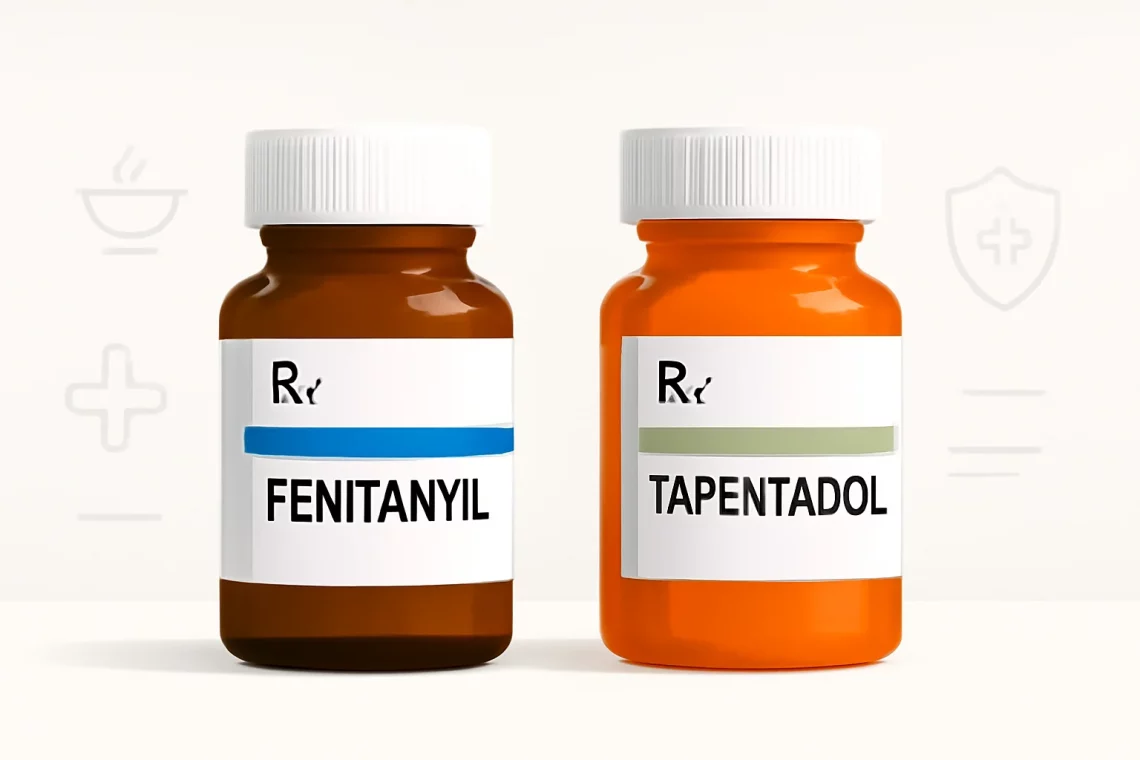-
Cephalexin vs Keflex: Understanding Their Differences and Uses
Cephalexin and Keflex are two terms that often arise in discussions about antibiotic treatments. For many, the distinction between these two names may seem trivial, but understanding the nuances can be crucial for effective treatment. Cephalexin is the generic name for a specific antibiotic that is classified as a cephalosporin. On the other hand, Keflex is a brand name under which cephalexin is marketed. This distinction is essential for patients and healthcare providers alike, as it influences prescription practices and patient education. Antibiotics like cephalexin play a vital role in modern medicine, helping to combat bacterial infections that can range from mild to severe. They work by interfering with the…
-
Spironolactone vs Eplerenone: Which is Right for You?
Spironolactone and eplerenone are two medications that play significant roles in the management of various medical conditions, particularly those related to cardiovascular health and fluid retention. They belong to a class of drugs known as aldosterone antagonists, which are primarily used to treat conditions such as hypertension, heart failure, and certain hormonal disorders. Both of these medications work by inhibiting the effects of aldosterone, a hormone that regulates sodium and water balance in the body, leading to increased excretion of sodium and water while retaining potassium. Understanding the differences and similarities between spironolactone and eplerenone can be crucial for patients and healthcare providers alike. While they share a common mechanism…
-
Spironolactone vs Eplerenone: Which Diuretic is Right for You?
Spironolactone and eplerenone are two medications that play a significant role in the field of cardiology and endocrinology. Both belong to a class of drugs known as aldosterone antagonists, which are primarily used to treat conditions associated with fluid retention and high blood pressure. While they share similarities in their mechanisms of action and therapeutic applications, they also exhibit distinct differences that can influence treatment decisions. Understanding the nuances between spironolactone and eplerenone is crucial for healthcare providers and patients alike. These differences can affect efficacy, side effects, and overall patient experience. As both medications work by blocking the effects of aldosterone, they help in managing conditions such as congestive…
-
Ezetimibe vs Atorvastatin: Which Cholesterol Medication is Right for You?
Ezetimibe and atorvastatin are two widely used medications that play a crucial role in managing cholesterol levels and reducing the risk of cardiovascular diseases. As heart disease remains a leading cause of morbidity and mortality worldwide, the importance of effective cholesterol-lowering strategies cannot be overstated. Both medications target lipid metabolism but through different mechanisms, which can lead to varying effects and outcomes for patients. Understanding the distinctions between these two drugs is essential for both healthcare professionals and patients alike, as it enables informed decisions regarding treatment options. Ezetimibe is primarily known for its ability to inhibit the absorption of cholesterol in the intestines, while atorvastatin is classified as a…
-
Vraylar vs Risperdal: Understanding the Differences and Uses
Vraylar and Risperdal are two medications commonly used in the treatment of mental health disorders. They belong to a class of drugs known as atypical antipsychotics, which are designed to manage symptoms of conditions such as schizophrenia and bipolar disorder. Both medications have unique properties, efficacy profiles, and side effects, making them suitable for different patient needs. Understanding the intricacies of each medication is essential for patients, caregivers, and healthcare professionals. Vraylar, also known by its generic name cariprazine, has gained attention for its unique mechanism of action that targets specific dopamine receptors in the brain. On the other hand, Risperdal, or risperidone, has been a long-standing treatment option with…
-
Azithromycin vs Clindamycin: Key Differences and Uses Explained
Azithromycin and clindamycin are two widely used antibiotics that play a crucial role in treating various bacterial infections. Though they belong to different classes of antibiotics and have distinct mechanisms of action, both are effective in their respective applications. Understanding the differences and similarities between these two medications is essential for healthcare professionals and patients alike. This knowledge can help in selecting the right antibiotic based on the type of infection, the patient’s medical history, and potential drug interactions. Antibiotics like azithromycin and clindamycin work by inhibiting bacterial growth, but they do so in different ways. Azithromycin is a macrolide antibiotic, while clindamycin belongs to the lincosamide class. Each antibiotic…
-
Adderall vs Concerta: Which ADHD Medication is Right for You?
Adderall and Concerta are two well-known medications commonly prescribed for the treatment of Attention Deficit Hyperactivity Disorder (ADHD). Both drugs belong to a category of medications known as stimulants, which work by altering the levels of certain neurotransmitters in the brain to help improve focus, attention, and impulse control. While they share a common goal of managing ADHD symptoms, their chemical compositions, effects, and potential side effects can differ significantly. Understanding the nuances between Adderall and Concerta can be crucial for patients and caregivers navigating treatment options. The choice between these medications often depends on individual responses, lifestyle considerations, and specific symptoms. As ADHD awareness continues to grow, so does…
-
Benzonatate vs Dextromethorphan: Which Cough Suppressant is Better?
The world of cough medications is vast, encompassing a variety of options designed to alleviate symptoms associated with respiratory conditions. Among these, Benzonatate and Dextromethorphan stand out as popular choices for managing cough. Understanding the differences between these two medications is crucial for anyone seeking effective relief. Benzonatate is a non-narcotic cough suppressant that works by numbing the throat and lungs, reducing the cough reflex. On the other hand, Dextromethorphan, an ingredient found in many over-the-counter cough medications, acts on the brain’s cough center to suppress the urge to cough. Both medications have their unique benefits and potential side effects, making it essential to explore their characteristics, uses, and how…
-
Naltrexone vs Vivitrol: Understanding Their Differences and Uses
Naltrexone and Vivitrol are two significant medications that play a crucial role in the treatment of substance use disorders, particularly opioid and alcohol dependence. Understanding their distinctions and applications is vital for patients, healthcare providers, and loved ones affected by addiction. Both Naltrexone and Vivitrol work by blocking the effects of opioids, thereby reducing cravings and preventing relapse. However, their mechanisms, formulations, and administration methods vary significantly. Naltrexone is an oral medication that can be prescribed for patients to take daily, while Vivitrol is a long-acting injectable formulation that is administered once a month. This difference in delivery can influence compliance and effectiveness, making it essential for individuals to understand…
-
Fentanyl vs Tapentadol: Key Differences and Comparisons Explained
Fentanyl and tapentadol are two powerful medications often used in pain management, but they differ significantly in their composition, mechanisms of action, and clinical applications. Understanding these differences is crucial for patients, healthcare providers, and anyone involved in pain management. Fentanyl is a synthetic opioid that is typically prescribed for severe pain, particularly in patients who are tolerant to other opioids. It is known for its potency and rapid onset of action, making it a go-to choice in acute pain scenarios, such as post-surgical recovery or cancer-related pain. On the other hand, tapentadol is a relatively newer medication that combines two mechanisms of action: it acts as an opioid analgesic…




